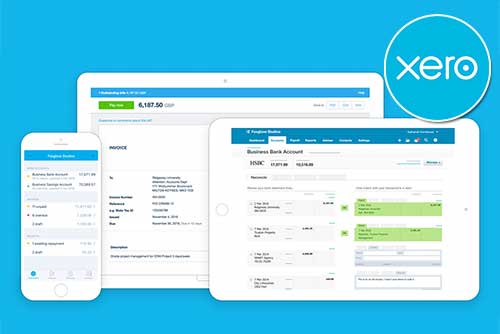What is Profit Margin?
In business, the term ‘profit margin’ is frequently used. But what exactly is profit margin, and why does it hold such importance in the business world?
This article explains the concept of profit margin, exploring its types, importance, and how it can be calculated.
Understanding Profit Margin
Profit margin is a measure of profitability for a company or business activity. It’s the percentage of sales revenue that a company retains as profit after all costs have been deducted. This metric is a reflection of a company’s pricing strategy and its ability to control costs. It’s also a key indicator of a company’s financial health and potential for growth.
A high profit margin indicates a high margin of safety, meaning there’s less risk that a decline in sales will wipe out profits and result in a net loss. Conversely, a low profit margin suggests a higher risk and a lower margin of safety.
Types of Profit Margin and How to Calculate Them
Gross Profit Margin
Gross profit margin is a measure of a company’s efficiency at converting raw materials and labour into products or services and selling them directly to consumers. This margin is a percentage that tells us how much profit a company makes for each pound of sales, after accounting for direct costs to produce the goods or services sold.
The formula for calculating gross profit margin is:
Gross Profit Margin = (Revenue – COGS/ Revenue) x 100
The gross profit margin is a useful tool for companies to determine pricing strategies for their products or services. If the gross profit margin is low, it might indicate that the company needs to increase its prices to make selling the product or service worthwhile.
Operating Profit Margin
Operating profit margin provides a more comprehensive view of a company’s profitability by considering both the cost of goods sold (COGS) and operating expenses.
The formula for calculating operating profit margin is:
Operating Profit Margin = (Operating Income/ Revenue) x 100
This margin is particularly useful as it includes costs such as rent and office supplies, which are not directly related to the production of goods but are essential for running the business.
Net Profit Margin
This is the most comprehensive measure, accounting for all expenses, taxes, and interest. It reflects the overall profitability of a company after all expenses have been deducted from revenues.
The net profit margin is calculated using the following formula
Net Profit Margin = (Net Income/ Revenue) x 100
A low net profit margin indicates a higher risk that a decline in sales will erase profits and result in a net loss.
The Benefits of Calculating Profit Margin
- Performance Evaluation: Profit margin helps in assessing the financial health and performance of a business. It indicates how efficiently a company is utilising its resources to generate profits.
- Comparison with Competitors: By calculating profit margins, businesses can compare their performance with industry standards and competitors. This comparison helps in identifying areas where the company is excelling or lagging behind.
- Strategic Decision Making: Profit margin analysis provides insights into pricing strategies, cost management, and revenue generation, helping businesses make informed decisions to improve profitability.
- Cost Control: Understanding profit margins helps businesses identify areas where costs can be reduced or optimised. By managing costs effectively, companies can enhance their profit margins without necessarily increasing revenue.
- Investor Confidence: Consistently high profit margins can attract investors and increase confidence in the business.
- Risk Management: Analysing profit margins allows businesses to anticipate potential challenges and take proactive measures to mitigate risks, ensuring long-term sustainability.
How to Improve Profit Margin
Here are strategies to enhance profit margin:
Revenue Enhancement
- Price Optimisation: Regularly review pricing strategies to ensure they are aligned with market demand and competitors’ offerings. Consider value-based pricing models and periodically adjust prices based on changes in costs or market conditions.
- Product Diversification: Expand product or service offerings to cater to a broader range of customer needs and preferences. Introduce complementary or related products that can be cross-sold or bundled together to increase average transaction value.
- Customer Retention: Focus on building long-term customer relationships through exceptional service, personalised experiences, and loyalty programs. Retaining existing customers is often more cost-effective than acquiring new ones and can lead to higher profit margins over time.
- Upselling and Cross-Selling: Train sales teams to effectively upsell and cross-sell additional products or services to existing customers. Encourage customers to upgrade to higher-priced offerings or purchase add-on products that complement their original purchase.
Cost Management
- Operational Efficiency: Streamline business processes and workflows to eliminate inefficiencies and reduce overhead costs. Implement lean principles and continuous improvement initiatives to optimise resource utilisation and enhance productivity.
- Supplier Negotiations: Negotiate with suppliers to secure better pricing, volume discounts, or extended payment terms. Build strong relationships with key suppliers and explore opportunities for strategic partnerships or supply chain collaborations.
- Outsourcing and Automation: Consider outsourcing non-core activities or investing in automation technologies to reduce labour costs and improve operational efficiency. Automate repetitive tasks and workflows to free up resources for higher-value activities.
- Overhead Reduction: Review overhead expenses such as rent, utilities, and administrative costs to identify areas where savings can be achieved. Look for opportunities to renegotiate contracts, consolidate facilities, or implement remote work arrangements to reduce overhead costs.
The Importance of Profit Margin
Profit margin serves as a critical indicator of a company’s financial health, efficiency, and potential for growth. It plays a pivotal role in strategic decision-making, from pricing strategies and cost control to risk management and attracting investment. By calculating and analysing different types of profit margins—gross, operating, and net—businesses can gain valuable insights into their operations, compare their performance with competitors, and make informed decisions aimed at enhancing profitability.





















